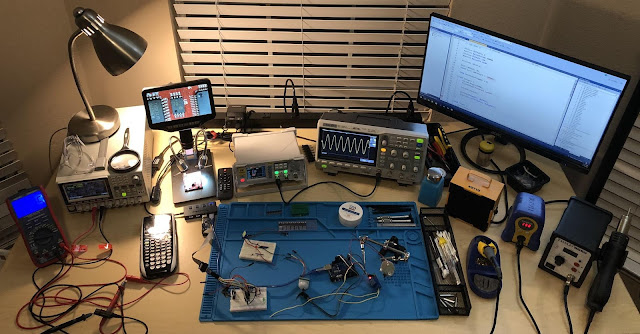- Digital Multimeter (DMM)
- SMD LCR Meter
- Adjustable Power Supplies
- Function Generator
- Mixed Signal Oscilloscope
- Multi-Protocol Adapter
- Universal Device Programmer
- Digital Microscope
- Soldering & Rework Station
- Hand Tools
- Anti-Static Mat & Wrist Strap
I reckon that most engineers will have at least 6-7 out of 11 of the above listed items, and the most meticulous ones will have all of them and more. There is no hard and fast rules to what type of models to procure but try not to go for the cheap ones with minimal functionalities if you can afford it. Good and reliable equipment will last longer and make your work a tat easier and more enjoyable, instead of unnecessary frustrations that may result in wrong diagnosis or wasted time and effort. Of course, you are expected to know how to use these tools and if you can utilize their full potentials, the better you will be at solving PCB defects.
Note:
The suggested list is meant for freelance engineers with their own workbenches. In my book, you will be introduced to other mid and high-end equipment used by repair centers for automated and more comprehensive testing. These are certainly out of reach of most self-employed engineers, but it is still advantageous to be aware and have some ideas how they operate. You never know when you may have the opportunity to work with them!









No comments:
Post a Comment